140 Years Of Iberian And Canarian Services
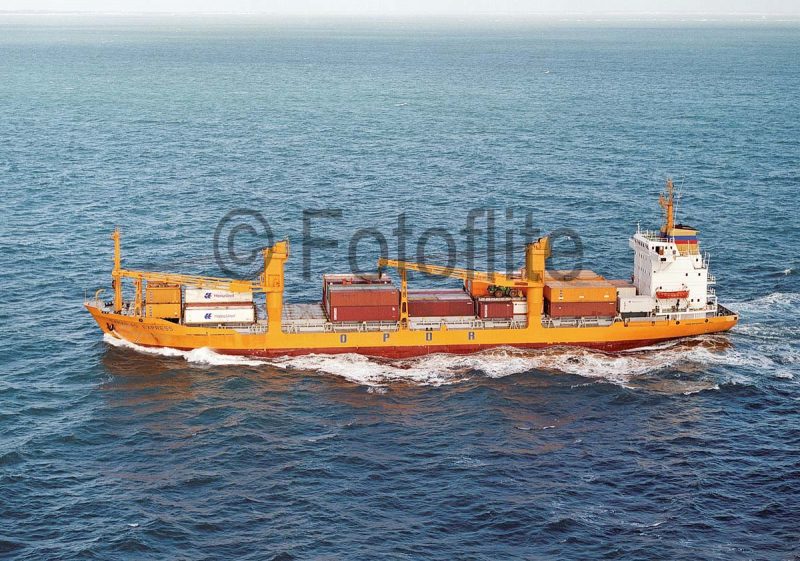
The Partenreederei Dampsfschiffs Oldenburg was founded in August 1880 by August Schultze, owner and director of glass manufacturers Harbers, Schultze and Company in Oldenburg in Lower Saxony to the west of Bremen, and his representative in Portugal, Hermann Burmester. Partenreederei means a partnership based on shares with several families holding shares in a ship. The partnership was to provide a better method of transportation of glass bottles to the Portuguese wine industry than available at the time, returning with cork. The Oldenburg Portuguese Dampsfschiffs Rhederei (OPDR) was founded on 28th October 1882 to extend the scope of the Portuguese service to new ports in more countries e.g. Spain, Morocco and Italy. Passengers in one class were also carried from the German ports of departure of Hamburg, Brake and Bremen to Porto, Lisbon, and ports in Northern Spain such as Vigo, with the first direct service to Madeira and Morocco ten years later in 1890. OPDR first called at Gibraltar in 1892 using A. Mateos and Sons as agents, and the Southern and Eastern Mediterranean ports of Spain had a direct service from 1901 in collaboration with Hamburg fruit importers, with the later very important services to the Canary Islands begun in 1910.
Oldenburg and the OPDR First Fleet
Oldenburg is today the capital of the Weser-Ems region of Germany and is located between Bremen and Groningen in Holland. The Oldenburg Schloss in the centre of the city was the residence of the monarchs of Oldenburg, but after the defeat of Germany in 1918 and the abdication of Kaiser Wilhelm II, the city ceased to be an administrative centre of the region, and the Grand Duchy of Oldenburg became the Free State of Oldenburg, with the Oldenburg Schloss turned into a museum. The mediaeval buildings of the city were destroyed by fire in 1676 after a bad plague a few years earlier, but the city quickly recovered with a variety of architectural styles and buildings.
The first two ships in the fleet were Oldenburg of 618 grt completed in 1880 and Portugal of 709 grt completed in 1883, with five ships owned in 1888 named Brake, Bremen, Cintra, Oldenburg and Portugal. Portugal was sold to Norwegian owners in 1889, and Brake was sold to Finnish owners a year later. Oldenburg was sunk in collision with the Newcastle steamer Cairnross in 1898, and Bremen met the same fate in 1900 in the English Channel after a collision with the British troopship Orotava. Franz Haniel and Company of Duisburg became a major shareholder in 1895 in OPDR, which continued for the next one hundred years. Share certificates for one thousand Deutsche marks were issued by the company at this time.
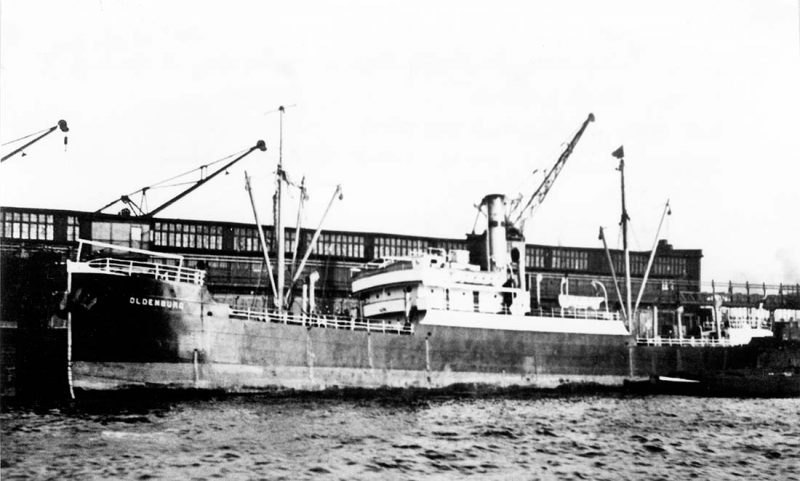

The OPDR fleet at the turn of the century comprised a dozen vessels of up to 1,500 grt in Brake (2), Bremen, Cintra, Coimbra, Nordsee, Oldenburg (2), Portimao, Porto, Portugal, Sines, Tanger and Vianna. Porto was sold to Nordenfjeldske D/S of Trondheim in 1903, Brake (2) was wrecked near Casablanca in 1904, Lisboa completed in 1901 was wrecked in the Tagus estuary on 19th January 1905, and Cintra was wrecked at Oporto while carrying glass bottles and glassware in 1909, while Nordsee sailed from Burntisland on 11th October 1910 with coal for Husum in Germany and disappeared without trace. Vianna was sold to another shipowner in Oldenburg in 1908, with the company entrusted with the mail service of the German Empire in 1910.
A big fleet of 27 steamers was in service at the outbreak of World War I in August 1914. These were Arucas, Bremen, Casablanca, Ceuta, Faro, Gibraltar, Larache, Las Palmas, Lisboa, Lubeck, Mazagan, Mehedya, Melilla, Mogador, Oldenburg, Orotava, Portimao, Porto, Rabat, Riga, Rotterdam, Saffi, Sines, Tanger, Teneriffa and Villareal.
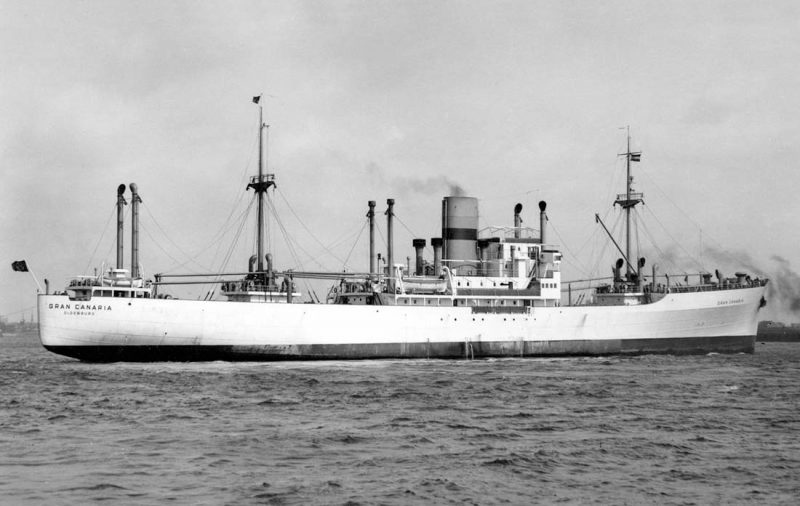
World War I
All of this large and fine fleet of German steamers was lost to enemy action during the war, or were surrendered to the victorious Allies after the end of the war. Lisboa of 1,799 grt and delivered in 1911 was one of 37 OPDR steamers completed by the Henry Koch A.G. shipyard in Lubeck for the company. She was seized by The Shipping Controller in 1920, but repurchased by the company a year later.
Six steamers were confiscated by Spain as compensation for tonnage lost by the unrestricted submarine warfare of Germany, and France took a similar number of ships in compensation.
Many of the OPDR vessels were interned at Lisbon, Huelva, Malaga, Las Palmas and other ports in the Canary Islands, but those lost were:-
- Casablanca seized by the Portuguese Government at Lisbon and renamed Ovar, and torpedoed and sunk by U93 on 25th August 1917.
- Lubeck seized by the Portuguese Government and renamed Barreiro, and torpedoed and sunk by UC69 in 1917.
- Mazagan seized by the Portuguese Government and renamed Trafaria, and torpedoed and sunk by U89 on 2nd October 1917.
- Porto captured by French warships off Guernsey in late 1914 and renamed Transporteur, and torpedoed and sunk off Malta by U32 on 11th October 1917.
- Telde captured by H.M.S. Essex in the English Channel in 1916, and renamed Huntsholm, and torpedoed and sunk on 11th June 1917 four miles south east of Owers Light Ship by UB40 while on a voyage from Dieppe to Southampton in ballast.
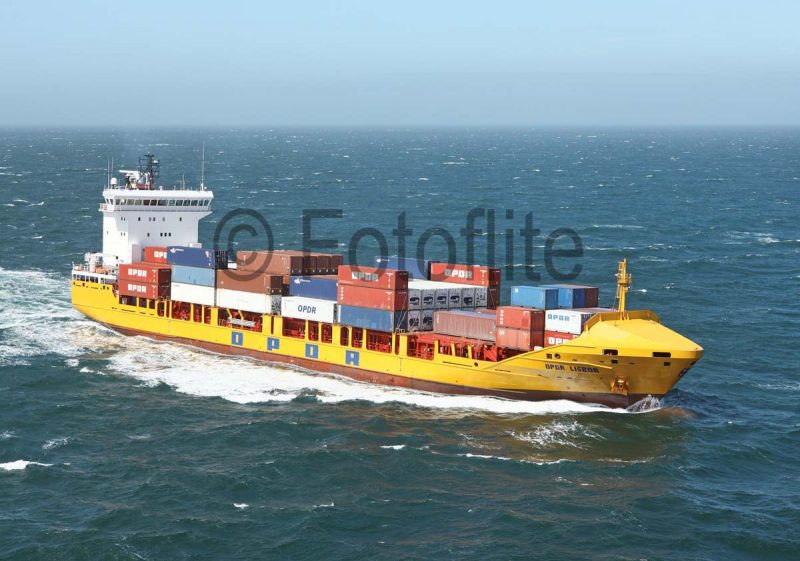
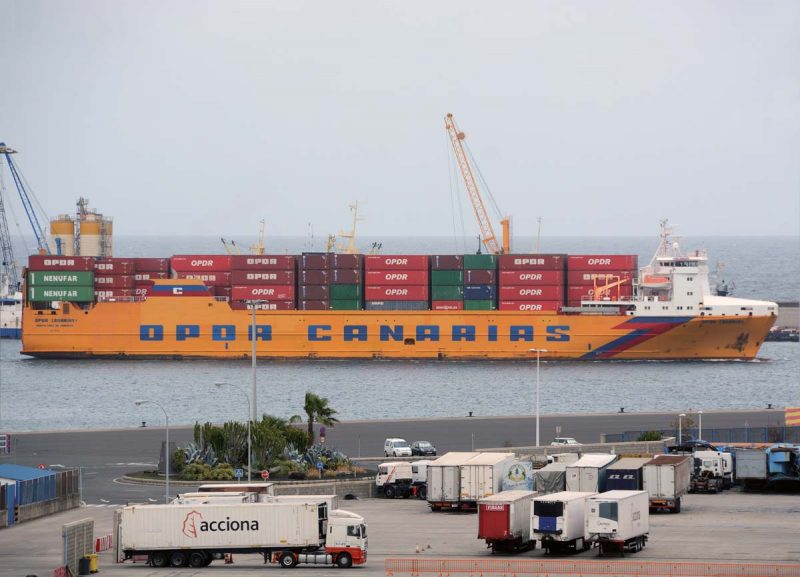
Inter-War Years
The Head Office of the company was now based in Hamburg, but only one steamer was allowed be traded in late 1919 by the Allies, this was the old steamer Strauss of 903 grt purchased from Argo Line of Bremen and renamed Oldenburg II. New steamers were delivered from German yards in 1921/22 to resume the fruit trade from Southern Spain, Madeira, Morocco and the Canary Islands. However, Casablanca and Agadir in Morocco were taken off the scheduled services in 1927 when Morocco came under French rule. Casablanca (2) was sunk in collision with the British steamer Henry Stanley in 1930 in the English Channel.
The OPDR fleet in 1932 comprised seventeen fine steamers in the range from 1,000 grt to 2,500 grt and named August Schultze, Bilbao, Ceuta, Larache, Las Palmas, Lisboa, Melilla, Oldenburg, Palos, Pasajes, Porto, Rabat, Saffi, Sebu, Sevilla, Tanger and Tenerife (ex Hermann Burmester).
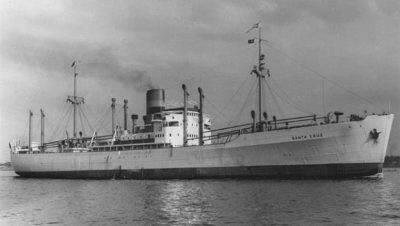
The two largest steamers had been completed in 1921, and named after the original founders of the company as August Schultze and Hermann Burmester, by the Norddeutscher Werft yard in Wesermunde on dimensions of length 278.4 feet, moulded beam of 40.5 feet, and depth of 23.7 feet. They carried a dozen passengers in their bridge decks of length eighty feet, with a fo’c’stle of length 36 feet, and a poop of length twenty feet. They were powered by triple expansion steam engines enhanced by a low pressure turbine to give a service speed of fifteen knots.
Oldenburg (2) was wrecked off Esposende in Portugal on 11th May 1936. Two new grey hulled steamers named Casablanca (3) and Oldenburg (3) were completed in 1936 by the Deutsche Werft yard in Hamburg with a deadweight of 3,300 tonnes on a draft of nineteen feet eleven inches. Their construction was such that with closed well decks they had the draft of vessels with full scantlings and a higher deadweight of 4,600 tonnes. They were powered by Lentz poppet valve superheated steam engines with exhaust turbines giving a service speed of thirteen knots. They carried up to a dozen passengers, and their three holds were served by derricks on two masts and two sets of posts. Their yellow funnels had blue and red narrow bands, with the blue band originally white in 1880.
The first motor vessel in the fleet was Telde, completed in the Deutsche Werft yard in Hamburg in 1934 as Sofia for Deutsche Levant Line but managed by Hapag, and purchased and renamed in 1938. She was built by the Reihersteig yard in Hamburg and carried 4,618 tonnes of fruit and general cargo in five holds served by five hatches with a service speed of fifteen knots from her twin six cylinder four stroke single acting single reduction diesel engines by Blohm & Voss of Hamburg. She had dimensions of length 353.0 feet, moulded beam of 50.2 feet, and depth of 18.6 feet, and carried Mediterranean fruit back to Germany between 1934 and 1939.
A big fleet of twenty ships with two more on order was in service on the outbreak of war in September 1939, including Plus on charter to F. Laeisz of Hamburg and completed in 1922 as Bilbao for the company, and she was also on charter to Woermann Line as Kamerun from 1932 to 1938.
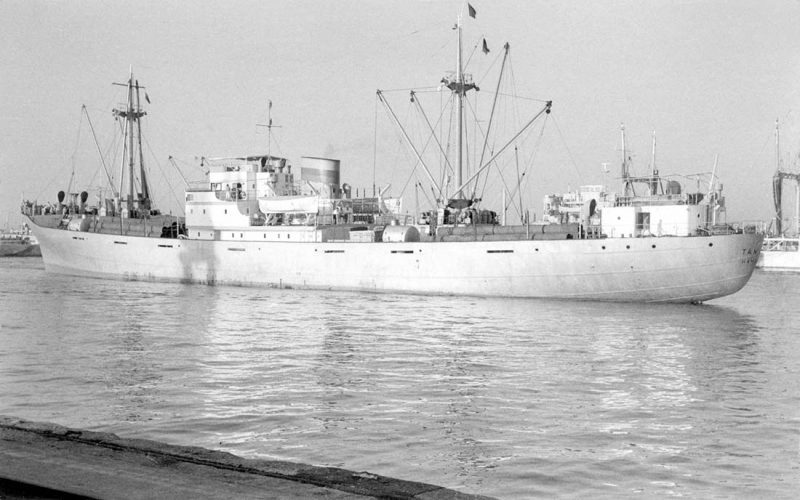
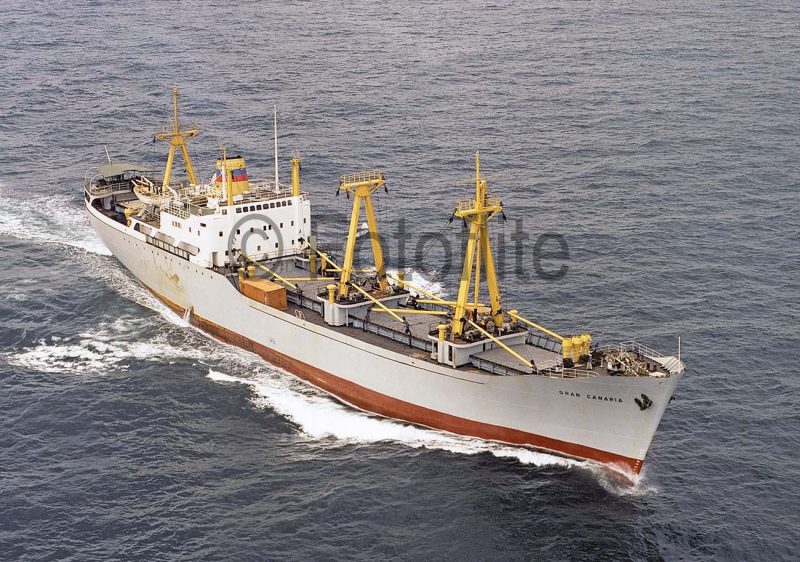
World War II
The largest vessel in the OPDR wartime fleet of nineteen vessels was managed for the Kriegsmarine, which became an escort vessel on the outbreak of war. This was the former general cargo ship Ammerland of 8,340 dwt, completed in 1923 by the Irvine yard at Hartlepool as Kilnsea for the Sea Steam Shipping Co. Ltd. of Hull (William Brown, Atkinson & Co. Ltd., managers). She had been purchased in 1936 by the Kriegsmarine, and she was torpedoed and sunk by the Russian submarine S55 in Porsangerfjord near the North Cape on 12th October 1943.
The new motor vessel Gran Canaria of 5,200 dwt was requisitioned by the German Navy on the outbreak of war as a submarine depot ship and renamed Erwin Wassner, but was bombed and sunk at Kiel in 1944.
However, by far the most famous vessel in the fleet was her sister motor vessel Santa Cruz of 5,160 dwt from the Deutsche Werft yard in Hamburg, which was requisitioned in 1940 as the commerce raider Thor, known as Raider ‘E’ to the Admiralty.
Thor sailed from Hamburg on 6th June 1940 on her first sortie, during which she sank twelve ships until her return on 30th April 1941. She was refuelled by the tankers Nordmark and Eurofeld at several secret rendezvous in the South Atlantic, and her victims were the Dutch vessel Kertosono of Rotterdam Lloyd, the Lamport and Holt ship Delaware, Bruges of Belgium, the British tramps Gracefield and Wendover, the Dutch Tela, the Norwegian whale factory ship Kosmos, the refrigerated meat ship Natia, the Anchor Line Britannia, Trolleholm of Sweden, and the ore carrier Sir Ernest Cassel of Sweden.
Thor is remembered most of all for her celebrated encounters with three British Armed Merchant Cruisers (AMC). She sighted Alcantara of Royal Mail Line at the end of July 1940 when six hundred miles east of Brazil and immediately turned away to try to escape. The speeds of both vessels reached just over twenty knots until Alcantara gained on Thor, which fired the first salvo at a range of 17,350 yards. This salvo brought down the radio aerial of Alcantara and did severe damage to her topsides and short circuited her number four gun, as Thor had the great advantage of director controlled firing of her guns and better rangefinders. Alcantara was severely damaged during the long gun duel, and was only saved from sinking by placing a collision mat over the gaping hole in her engine room.
Next it was the turn of the Union Castle Line Carnarvon Castle to be badly damaged by the guns of Thor on 5th December. Carnarvon Castle opened fire first but the superior fire of Thor caused many hits on the A.M.C. without a single shell hitting Thor.

She went further on her third encounter with an A.M.C. on 4th April 1941, this was Voltaire of Lamport and Holt, which was spotted at first light and hit by her first salvo damaging her steering gear so that she could only circle. She sank two hours after the battle had commenced, with 196 British sailors rescued by lifeboats from Thor as they jumped overboard from the blazing Voltaire.
The second sortie of Thor began on 14th January 1942 from Hamburg, sinking a further nine ships in the Greek Pagasitikos, the British tramps Wellpark and Willesden, the Norwegian Aust, the Ropner tramp Kirkpool, the British Nankin in the Indian Ocean, the ‘Liberty’ ship George Clymer, as well as Olivia and Indus before arriving in Japan in October 1942. Thor was finally destroyed at Yokohama when the supply tanker Uckermark blew up alongside her on 30th November 1942.
The OPDR vessels lost by enemy action or marine causes during the war were:-
- Bilbao (ex Plus) mined and sunk off Borkum on 16th June 1942.
- Casablanca capsized and sank in the Baltic on 24th November 1943 after her cargo of iron ore had shifted.
- Lisboa torpedoed and sunk by British submarine Unruffled on 13th January 1943 four miles north of Susa.
- Melilla mined and sunk off Ijmuiden on 22nd February 1943.
- Oldenburg torpedoed and sunk by British submarine Sunfish in the Kattegat on 14th April 1940.
- Rabat sunk by Allied aircraft in Bodo Roads on 4th October 1943.
- Tanger sunk by collision off Brunsbuttelkoog on Christmas Day 1939.
Three OPDR vessels were in Spanish ports when war broke out, and were taken over by the State owned Elcano in 1943, Larache became Ria de Camarinas, Sevilla became Ria de Ares, and Porto became Ria de el Ferrol.
Four ships were captured intact at German or Danish ports at the end of the war, with Ceuta becoming Empire Camel, Las Palmas becoming Empire Kennet, Pasajes becoming Empire Rhondda, and Telde becoming Empire Helmsdale as British prizes. Empire Camel returned to the OPDR fleet in 1956 as Safi and registered under the Compagnie Generale Marocaine d’Armement of Casablanca. Tenerife was taken over at Travemunde in May 1945 and allocated to the French Government and renamed Baalbek.
Post-War Years
German owners were not allowed to own or trade deep sea ships until 1950, but the coaster Golm of 405 grt built back in 1915 by the Atlas Works at Bremen was fitted with a new six cylinder diesel and allowed to trade in 1948 for OPDR.
After the conclusion of the Petersberg Agreement in late 1949, OPDR immediately ordered a dozen grey hulled fruit carrying motor vessels of either 2,500 dwt or 4,700 dwt from the Deutsche Werft yard in Hamburg and the Lubecker Maschine yard in Lubeck. They carried a dozen passengers and were named Ceuta, Duisburg, Homberg, Las Palmas, Lisboa, Oldenburg, Oberhausen, Rabat, Ruhrort, Tazacorte, Tanger and Tenerife. Bilbao was completed in 1953 of 3,000 dwt for the United Frankfurt Steamship Company, and Melilla of 2,500 dwt was completed in 1952 for the Stettin Steamship Company, and both were managed by OPDR. The new post-war fleet was powered by six, seven or nine cylinder M.A.N. diesels manufactured at Augsburg.
Two machinery aft vessels were completed in 1957 at Walsum of 1,500 dwt as Setubal and Sevilla. The company then managed two tankers for the Bundesmarine of 16,000 dwt in Kongsdal built in 1937 for A/S Moltzaus Tankrederi of Oslo renamed Ammerland, and Powell built in 1950 for Hector Whaling Co. Ltd. and renamed Munsterland. This pair of naval tankers was taken over by the Bundesmarine in 1959.
The fleet at the beginning of 1960 comprised twenty reefers and cargo ships of up to 4,700 dwt. A motor vessel of 4,390 dwt was purchased in 1965 as Frederika and renamed as Gran Canaria. She had been built by the A/B Finnboda Verft yard in 1957 for Erik Hogberg of Stockholm on dimensions of length 375.8 feet, moulded beam of 50.8 feet, and draft of 20.6 feet, and was of similar size and dimensions to the OPDR vessels of 4,700 dwt built in the 1950s. She was powered by a five cylinder two stroke B & W oil engine built by the Eriksberg yard at Gothenburg.
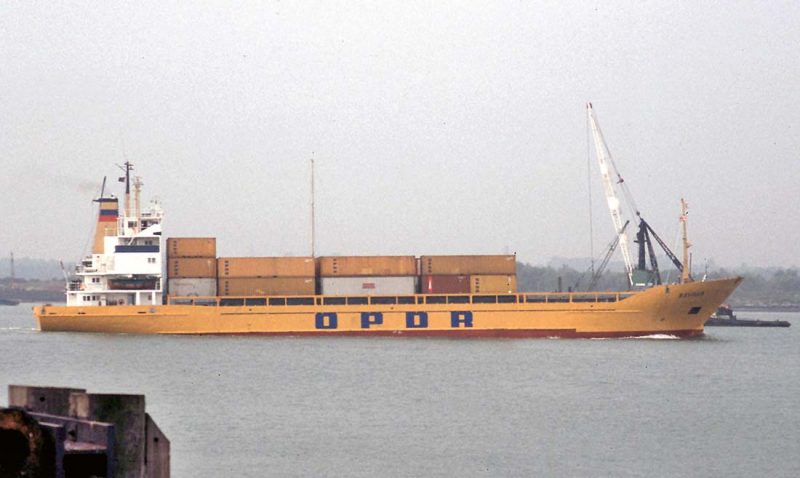
A class of three smaller twin hold engines aft vessels of 2,420 dwt was completed in 1967 as Algarve, Cadiz, and Huelva by the J. J. Sietas yard in Hamburg, with seven cylinder four stroke M.A.N. diesels giving service speeds of fourteen knots. They were the last new OPDR vessels for some time, as purchased vessels were to feature in the fleet until the introduction of modern ro-ro and container ships in the mid 1980s. Bilbao of 2,780 dwt was purchased in 1973 as Inger, Safi of 2,350 dwt was purchased as Irmgard Bos in 1977, and Oldenburg (5) of 4,080 dwt was purchased in 1977 as Cape Hatteras but had been built in 1971 as Arete.
Three container ships of 432 TEU capacity with two cellular holds and twin cranes of forty tonnes lift capacity, were purchased in 1984 from the bankrupt Hellenic Lines of Greece. The trio had been built in 1981/82 by the Singapore Shipbuilding and Engineering yard as Hellenic Dawn, Hellenic Island and Hellenic Cape, and were renamed by OPDR as Liboa, Tanger and Cadiz. They were powered by twelve cylinder diesels of 6,000 bhp manufactured by IHI of Japan to give service speeds of fifteen knots. The trio were flagged out to the Antigua flag in 1993 as they were the last of the fleet under the German flag. Tanger was renamed Canarias Express for the flagship route to the Canary Islands, and Cadiz and Lisboa traded to Madeira and Morocco for OPDR throughout the 1990s until sold off in 1998.
The smaller container ship Francop built in 1974 by the J. J. Sietas yard in Hamburg for Walter Bartels of Hamburg was managed by OPDR from 1990 as Casablanca, and then purchased by OPDR in 1996 as OPDR Cartagena. She had also been on charter to Manchester Lines from 1976 to 1983 as Manchester Faith. Several Spanish investors purchased shares in a new OPDR subsidiary, OPDR Canarias S.A., in 1993 based in Madrid and offering a weekly ro-ro box service from Seville to the Canary Islands. This was a good investment as OPDR had made a profit in most of the years of the 1990s on a turnover of around 140 million Deutsche Marks.
The ro-ro Mercandian Duke, built in 1984 with bridge forward and engines aft, was thus chartered in 1993 for twenty years for the new service as Canarias Express, and her sister Mercandian Senator was chartered for ten years in 1998 as Andalucia Express, both vessels were of 7,200 dwt and had been built as part of a group of similar ro-ros for charter by the Mercandian Group of Denmark in 1983/84.
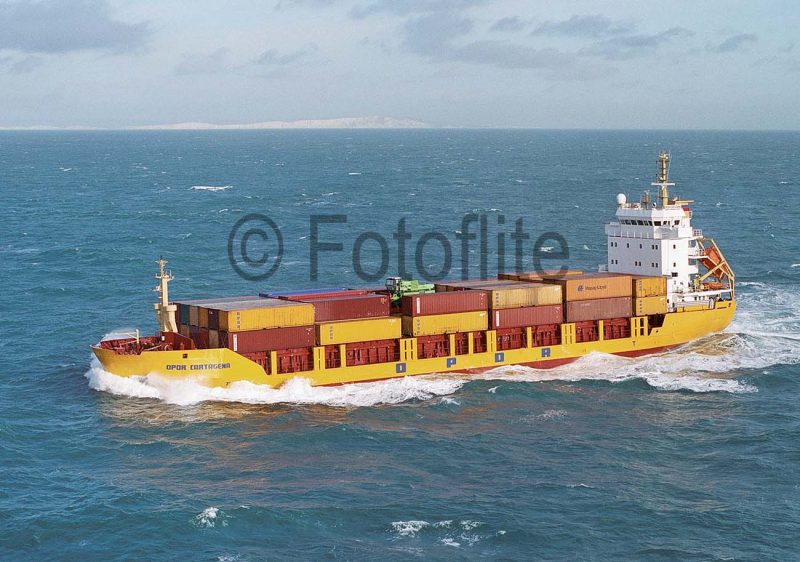
Four new container vessels of 380 TEU were completed by the Jiangsu Shipyard in Jiangyin in China for OPDR in 1998 as OPDR Casablanca, OPDR Cartagena, OPDR Porto and OPDR Sevilla. The quartet were powered by a nine cylinder MaK diesel to give a service speed of fifteen knots, and their single hold was served by twin hatches. Three larger container ships of 700 TEU capacity and 8,300 dwt were completed for OPDR in 2002/03 by the Fujian Mawei Shipyard of Fuzhou in China as OPDR Cadiz, OPDR Las Palmas and OPDR Tenerife. They had one hundred plugs for refer containers, and were powered by seven cylinder four stroke Caterpillar diesels of 8,600 bhp to give service speeds of seventeen knots. OPDR Tenerife was renamed FOCS Tenerife between 2002 and 2008 when she reverted to OPDR Tenerife, and two sisters were completed during 2006/07 as OPDR Lisboa and OPDR Tanger. Fred. Olsen Canary Service (FOCS) was purchased by OPDR in December 2000, after the Fred. Olsen Canary Service had made its last sailing to the archipelago in September of that year.
Two container ro-ro vessels of 500 TEU capacity with 119 reefer plugs and 1,510 metres of lane length were completed during 2006/07 by the same Fujian Mawei Shipyard of Fuzhou in China as OPDR Canarias and OPDR Andalucia. They have overall lengths of 145.0 metres, beam of 22.0 metres, depth of 13.9 metres with a draft of six metres, and a large centre door and ramp aft measuring eighteen metres by fifteen metres. They are powered by twelve cylinder Caterpillar diesel engines of 8,200 bhp to give service speeds of sixteen knots, and have a thruster aft and another forward for manoeuvring in the smaller harbours of the Canary Islands. They have a gross tonnage of 11,197 and a deadweight tonnage of 7,282 tonnes, with their navigating bridges forward and engines aft, and both have completed five hundred round voyages to the Canary Islands in ten years, with OPDR Canarias arriving at Seville on 22nd November 2016 at the end of her voyage, having travelled an impressive 750,000 nautical miles in ten years.
New wholly owned OPDR subsidiaries were opened in 2012 as OPDR Iberia S.A. and OPDR Germany Gmbh as regional sales offices, to operate with the already established OPDR Canarias S.A. A new joint service by OPDR and Team Lines of Hamburg to Bilbao from Felixstowe and Rotterdam began in October 2013. Bilbao was the last major Spanish box hub that OPDR did not serve. OPDR had a fleet of seven owned vessels plus additional chartered vessels on its network serving twenty European and African countries, including Mauritania, Cape Verde Islands and the nine islands of the Azores.
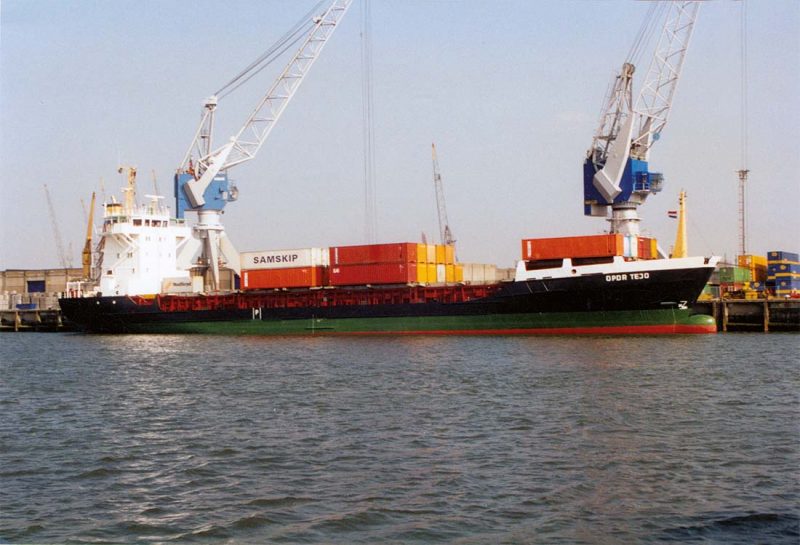
OPDR Taken Over By CMA CGM
OPDR had been owned by the Bernhard Schulte Group since 1996, when Franz Haniel of Duisburg, the only shareholder in OPDR at that time, sold its shares and consequently OPDR to Schulte. An offer was made by Jacques R. Saade of CMA CGM to purchase OPDR for an undisclosed price following his visit to Hamburg on 25th November 2014. The takeover took effect in Spring 2015, with the resulting benefits of a strategy linking MacAndrews, taken over by CMA CGM in 2002, with OPDR in its Northern European schedules. Short sea shipping specialists OPDR joined with MacAndrews at Tilbury at the London Container Terminal from 1st January 2016 on combined services, making Tilbury the biggest Northern European hub for the combined OPDR and MacAndrews grouping, with nine calls per week and nearly five hundred calls per year.
Four thousand new high cube containers of forty feet in length have since been delivered to OPDR and MacAndrews to enable customers to ship more goods and offer enhanced cargo security. The high cube containers can be used to stow thirty Euro pallets, more than an ordinary container, and have a high payload enabling the carriage of heavier cargo.
A fleet of eleven OPDR vessels has included in recent years the chartered vessels Alida, Andrea, Mistral, Pantonio, JRS Capella and DP Legacy on its scheduled services. DP Legacy of 925 TEU capacity called at the C. Steinweg South West Terminal in Hamburg on 11th October 2016 for the first time as its normal berth in Hamburg was due to close. The Steinweg Terminal has a quay length of 1,350 metres with space for six ships at any one time, and a terminal area of 210,000 square metres. The Seville Container Terminal began to be owned jointly by OPDR and Boluda of Spain from New Years Day of 2017 after an agreement was concluded in July 2016. This joint venture was named Terminales Maritimas del Guadalquivir and controls an area of 180,000 square metres in addition to the railway terminal at Muelle del Centenario for handling of containerised cargo. Five rail freight trains per week link Seville with Madrid, including with OPDR cargo from the Canary Islands.
Current OPDR Schedules
OPDR operates five different services, linking Northern Europe and the Canary Islands, Seville and the Canary Islands, Northern Europe to Spain, Portugal and Morocco, Northern Europe and Morocco, and Northern Europe, Spain and Scandinavia. The ports served by these five services are:-
Canary Islands Express
Owned and chartered vessels operating on a three times weekly service, with two con/ro-ro vessels northbound and two con/ro-ro vessels southbound, from Seville to Tenerife, Las Palmas and Arrecife, plus a feeder service from Leixoes, Vigo and Lisbon. Transit times from Seville to Santa Cruz de Tenerife are two to three days depending on the weather.
Northern Europe To Canary Islands
Owned and chartered vessels operating on a regular fortnightly service, with vessels sailing from Hamburg, Rotterdam, Tilbury, Setubal, Gibraltar, Casablanca and Agadir to Las Palmas, Arrecife and Tenerife. German beer is carried outwards to the Canary Islands, Belgian chemicals to Morocco, with fruit and wine homeward to the Thames, Elbe and the New Waterway in Rotterdam.
Portugal And Spain Service
Owned and chartered vessels on a Rotterdam, Tilbury and Rouen service to Setubal, Huelva, Algeciras and Cartagena. A door to door service is operated using rail, truck or barges from factory to port and then to all destinations on the Iberian peninsula.
Russia to Morocco Service
Owned and chartered vessels on a St. Petersburg, Rotterdam, Antwerp, Portsmouth, and Le Havre service to Algeciras, Tangier, Casablanca and Agadir. Fresh fruit is carried from Morocco to St. Petersburg in only eight days.
European Hinterland To Norway
Chartered Rhine river craft and owned vessels from Rotterdam via Immingham, Teesport and Grangemouth to Oslo, Brevik and Moss. This is a new service that began in October 2016 and is intended to take a share of a very traditional trade that has operated along the length of the Rhine in barges with low air draft.
Postscript
Many shipping lines have served the Canary Islands over the decades from European ports, including Yeoward Line of Liverpool, Fred. Olsen of Oslo, and Boluda Lines, Contenemar, Pinillos, Trasatlantica and Iscomar of Spain. I have seen many of the OPDR vessels at close quarters in the three Canarian ports of Santa Cruz de Tenerife, Las Palmas de Gran Canaria, and Arrecife on Lanzarote while on long holidays and extended stays in the archipelago. They are always in very good hull condition with the yellow or orange paint freshly applied, complementing their yellow funnels with blue and red bands.
OPDR with 140 years of shipowning history, and MacAndrews with 160 years of shipowning history, will both benefit from being part of the third biggest container line n the world, CMA CGM. The two short sea specialists each transport around 300,000 TEU of containers per year, and their traditional names will hopefully continue for many years and be developed under their new owner. OPDR employs 250 seafarers and office staff in Hamburg, and has an extensive network of agencies in twenty five countries, including Spain, Portugal and Italy and several other countries in Europe as well as the Canary Islands.

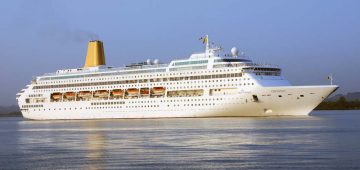
Comments
Sorry, comments are closed for this item